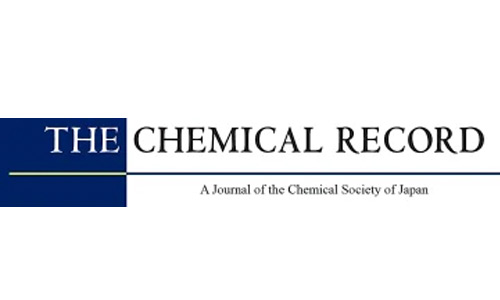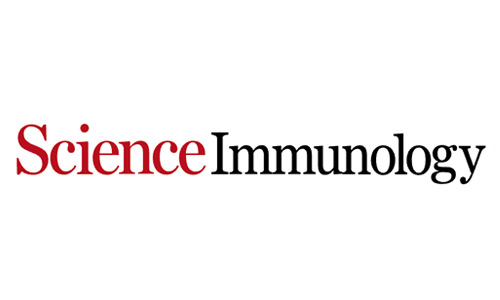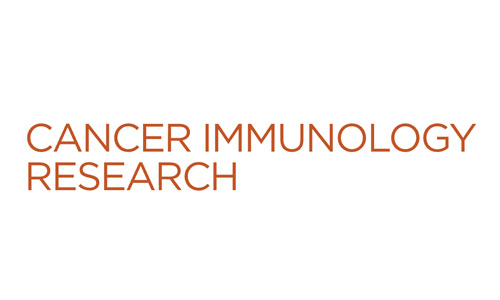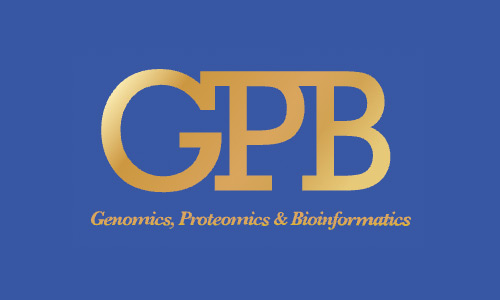- Follow Us
Scientific Publications
High-profile publications featuring CDI Labs next-gen proteomics technologies and services
354 Total Publications
Refine Your Search
Publication Details
- Date
- Link
- + Abstract

Elsevier - Journal of Functional Foods
- Main Product: HuProt
- Kaempferol protects against high-salt-induced hypertension and vascular endothelial injury by inhibiting ferroptosis through the ATF4/ACSL4 pathway
- Qiuer Liang, Minghao Chen, Guangtian Chen, Pengli Xu, Lai Kwan Lam, Pengcheng Xie, Ting Xie, Wanqing Tu, Tianhao Liu,...
- School of Traditional Chinese Medicine, Jinan University
To date, no specific treatments have been developed for high-salt-induced hypertensive vascular damage, emphasizing the need to elucidate its underlying molecular mechanisms for therapeutic innovation. Kaempferol (Kae), a natural flavonol belonging to the flavonoid family, has demonstrated significant vascular protective effects in previous studies. However, its impact on high-salt-induced hypertensive vascular injury remains unclear. This study aimed to explore the pharmacological effects and underlying mechanisms of Kae in mitigating hypertensive vascular damage.

Elsevier: Journal of Autoimmunity
- Main Product: HuScan
- Anti-retinal immune response in sarcoid uveitis: A potential role for PCLO as an antigenic target
- Benjamin Schrijver, Martijn Kolijn, Saad H. Hasib, Josianne C.E.M. ten Berge, Ikhwanuliman Putera, Nicole M.A. Nagtzaam,...
- a Laboratory Medical Immunology, Dept of Immunology, Erasmus MC University Medical Center Rotterdam
To explore the autoimmune component of sarcoid uveitis (SU) by analyzing serum anti-retinal antibodies (ARAs), identifying targeted retinal proteins, T- and B-cell receptor repertoires and HLA genotype.

The Chemical Record
- Main Product: HuProt
- Target Discovery Driven by Chemical Biology and Computational Biology
- Bohai Lyu, Dr. Wenfeng Gou, Dr. Feifei Xu, Dr. Leyuan Chen, Zhiyun Wang, Zhonghao Ren, Gaiting Liu, Prof. Dr. Yiliang...
- Institute of Radiation Medicine, Peking Union Medical College & Chinese Academy of Medical Sciences
Target identification is crucial for drug screening and development because it can reveal the mechanism of drug action and ensure the reliability and accuracy of the results. Chemical biology, an interdisciplinary field combining chemistry and biology, can assist in this process by studying the interactions between active molecular compounds and proteins and their physiological effects. It can also help predict potential drug targets or candidates, develop new biomarker assays and diagnostic reagents, and evaluate the selectivity and range of active compounds to reduce the risk of off-target effects.

Science Immunology
- Main Product: HuProt
- Multiomics dissection of human RAG deficiency reveals distinctive patterns of immune dysregulation but a common inflammatory signature
- Marita Bosticardo, Luigi D. Notarangelo, et. al.
- Laboratory of Clinical Immunology and Microbiology, National Institute of Allergy and Infectious Diseases, National Institutes of Health
Recombination-activating gene 1 (RAG1) and RAG2 are required for V(D)J recombination, which directs mature B and T cell development and a fully functional adaptive immune system. Hypomorphic variants of the RAG genes in humans results in an array of immunodeficiencies, which all have distinct features for reasons not well understood. Bosticardo et al. performed a multiomics analysis of 157 patients with RAG deficiency who presented with a spectrum of disease phenotypes along with 135 age-matched controls. Analyzing blood, bone marrow, and other tissue biopsies, the authors found prominent signatures of immune dysregulation with both common and distinctive features in these patients. These findings may direct phenotype-specific therapeutic interventions before patients can receive definitive treatments.

AACR - Cancer Immunology Research
- Main Product: HuProt
- Complement Factor H Is an ICOS Ligand Modulating Tregs in the Glioma Microenvironment
- Karolina I. Smolag, Jakub Olszowka, Rebecca Rosberg, Elinn Johansson, Elisabet Marinko, Karin Leandersson, David J....
- Division of Translational Cancer Research, Lund University Cancer Centre
The survival rate of patients with glioma has not significantly increased in recent years despite aggressive treatment and advances in immunotherapy. The limited response to treatments is partially attributed to the immunosuppressive tumor microenvironment, in which regulatory T cells (Treg) play a pivotal role in immunologic tolerance. In this study, we investigated the impact of complement factor H (FH) on Tregs within the glioma microenvironment and found that FH is an ICOS ligand.

Cell Research
- Main Product: HuProt
- Tau is a receptor with low affinity for glucocorticoids and is required for glucocorticoid-induced bone loss
- Wenyu Fu, Meng Chen, Kaidi Wang, Yujianan Chen, Yazhou Cui, Yangli Xie, Zi-Ning Lei, Wenhuo Hu, Guodong Sun, Guiwu...
- Dept of Orthopaedics and Rehabilitation, Yale University School of Medicine
Glucocorticoids (GCs) are the most prescribed anti-inflammatory and immunosuppressive drugs. However, their use is often limited by substantial side effects, such as GC-induced osteoporosis (GIO) with the underlying mechanisms still not fully understood. In this study, we identify Tau as a low-affinity binding receptor for GCs that plays a crucial role in GIO. Tau deficiency largely abolished bone loss induced by high-dose dexamethasone, a synthetic GC, in both inflammatory arthritis and GIO models.

medRxiv
- Main Product: HuScan
- Novel Multiplex Immunofluorescence-based Tumor Inflammation Score Provides Apparent Predictive Biomarker in a Phase I/II Study of Pembrolizumab
- Rachel E. Sanborn, Shawn M. Jensen, Christopher Paustian, Shu-Ching Chang, Eloy Vetto, Quyen Vu, Venkatesh Rajamanickam,...
- Robert W. Franz Cancer Center, Earle A. Chiles Research Institute, Providence Cancer Institute
Retrospective characterization of cell-cell relationships in the tumor microenvironment provides significantly better predictive power than PD-L1 expression, tumor mutational burden (TMB), or gene expression profiles. In this small study assessing the safety and possible efficacy of gemcitabine and pembrolizumab in immunotherapy-naïve patients with NSCLC who have received prior treatment, we investigated both standard and novel immune parameters on 16 enrolled patients.

Advanced Science
- Main Product: HuProt
- PNPO-Mediated Oxidation of DVL3 Promotes Multiple Myeloma Malignancy and Osteoclastogenesis by Activating the Wnt/β-Catenin Pathway
- Zhendong Deng, Shanliang Sun, Nian Zhou, Yumeng Peng, Long Cheng, Xichao Yu, Yuxia Yuan, Mengjie Guo, Min Xu, Yuexin...
- Nanjing Hospital of Chinese Medicine affiliated to Nanjing University of Chinese Medicine
Multiple myeloma (MM) is a cancer of plasma cells caused by abnormal gene expression and interactions within the bone marrow (BM) niche. The BM environment significantly influences the progression of MM. Celastrol, a natural compound derived from traditional Chinese medicine, exhibits significant anticancer effects. This study aimed to identify specific targets of celastrol and develop more effective and less toxic treatment options for MM. Celastrol is used as a probe to determine its specific target, pyridoxine-5′-phosphate oxidase (PNPO). Increased levels of PNPO are associated with poor outcomes in MM patients, and PNPO promotes MM cell proliferation and induces osteoclast differentiation through exosomes.

GPB
- Main Product: HuProt
- A Novel IgG–IgM Autoantibody Panel Enhances Detection of Early-stage Lung Adenocarcinoma from Benign Nodules
- Rongrong Luo, Xiying Li, Ruyun Gao, Mengwei Yang, Juan Cai, Liyuan Dai, Nin Lou, Guangyu Fan, Haohua Zhu, Shasha Wang,...
- Dept of Clinical Laboratory, Peking Union Medical College
Autoantibodies hold promise for diagnosing lung cancer. However, their effectiveness in early-stage detection needs improvement. In this study, we investigated novel IgG and IgM autoantibodies for detecting early-stage lung adenocarcinoma (Early-LUAD) by employing a multi-step approach, including Human Proteome Microarray (HuProtTM) discovery, focused microarray verification, and ELISA validation, on 1246 individuals consisting of 634 patients with Early-LUAD (stage 0–I), 280 patients with benign lung disease (BLD), and 332 normal healthy controls (NHCs). HuProtTM selected 417 IgG/IgM candidates, and focused microarray further verified 55 significantly elevated IgG/IgM autoantibodies targeting 32 tumor-associated antigens in Early-LUAD compared to BLD/NHC/BLD+NHC.

Elsevier - International Immunopharmacology
- Main Product: HuProt
- Paeoniflorin alleviates DSS-induced ulcerative colitis by suppressing inflammation, oxidative stress, and apoptosis via regulating serum metabolites and inhibiting CDC42/JNK signaling pathway
- Qichao Hu, Jin Xie, Tao Jiang, Pan Gao, Yuan Chen, Wenwen Zhang, Jing Yan, Jinhao Zeng, Xiao Ma, Yanling Zhao
- Chengdu University of Traditional Chinese Medicine
Ulcerative colitis (UC) poses a threat to human health. The present study attempts to unravel the efficacy and potential mechanisms of paeoniflorin (PF), a naturally sourced active ingredient, for the management of UC. By establishing a DSS (dextran sulphate sodium)-induced experimental rat model of UC, this study found that PF was effective in ameliorating UC symptoms, inhibiting oxidative stress, inflammation and apoptosis, and repairing colonic epithelial damage. In addition, metabolomics revealed that PF may alleviate UC by primarily improving linoleic acid metabolism.